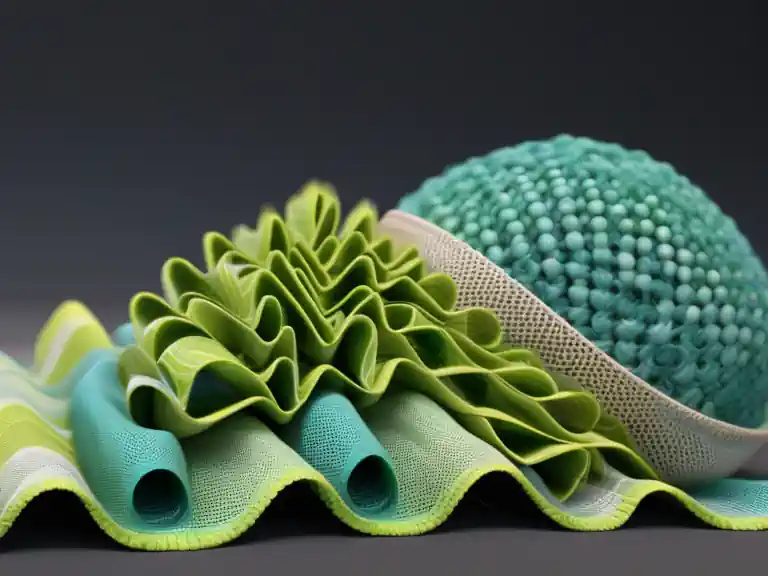Conducting a Sustainable Textile Lifecycle Assessment: An In-Depth Guide for Eco-Conscious Fashion Designers and Textile Manufacturers
August 3, 2024 | by Steve Last

As the fashion and textile industry grapples with its significant environmental impact, the need for sustainable practices has never been more critical. One powerful tool that eco-conscious fashion designers and textile manufacturers can leverage is the Sustainable Textile Lifecycle Assessment (LCA). This guide will walk you through the importance of LCA, how to conduct one step-by-step, and key metrics to measure, ensuring that your products are as environmentally responsible as possible.
For instance, a study by the World Resources Institute found that the global fashion industry is responsible for 10% of annual global carbon emissions. By integrating LCA, companies can significantly mitigate their impact.

The Importance of Lifecycle Assessment in Reducing Environmental Impact
The textile industry is one of the largest contributors to pollution, with extensive water usage, chemical runoff, and waste generation.
Conducting a Lifecycle Assessment allows businesses to:
- Evaluate the environmental impact of a product or service from cradle to grave.
- Identify opportunities to reduce resource consumption and waste.
- Enhance their sustainability reputation and brand image.
- Make informed decisions about product design, materials, and processes.
- Comply with environmental regulations and standards.
By focusing on these aspects, businesses can create a robust LCA strategy that drives growth while contributing positively to the environment.
How to Conduct a Sustainable Textile Lifecycle Assessment: Step-by-Step
Step 1: Define the Goal and Scope
Begin by determining the purpose of your LCA. Are you looking to reduce water usage, carbon emissions, or chemical pollutants? Clearly defining your goals will guide the assessment process. For example, a fashion brand may aim to reduce its water footprint by 30% within five years.
Step 2: Inventory Analysis
This step involves collecting data on all inputs and outputs of the textile production process. This includes resources like water, energy, and raw materials, as well as emissions and waste. Utilize tools such as the GaBi Software or the SimaPro for accurate data collection and analysis.
Step 3: Impact Assessment
Analyze the data to understand the environmental impacts of each stage of the textile lifecycle. Key metrics to measure include:
- Water consumption: Quantity of water used for fiber cultivation, processing, dyeing, finishing, and laundering.
- Energy consumption: Energy required for fiber production, textile manufacturing, transportation, and end-of-life processing.
- Greenhouse gas emissions: Carbon footprint associated with each stage, including emissions from land use change, energy use, and waste disposal.
- Chemical use: Types and quantities of chemicals used in fiber production, dyeing, finishing, and treatment, including their potential toxicity and environmental impact.
- Waste generation: Amount and type of waste produced at each stage, including solid waste, wastewater, and air emissions.
- Land use: Area of land required for fiber cultivation, textile production facilities, and waste disposal.
- Biodiversity impact: Effects on ecosystems and biodiversity due to land use change, water pollution, and chemical use.
- By assessing these metrics, businesses can identify hotspots within the textile lifecycle and prioritize areas for improvement.
A case study from Patagonia highlights how their LCA revealed significant water and energy savings by switching to organic cotton from conventional cotton.
Step 4: Interpretation and Improvement
Interpreting your findings is crucial for identifying areas for improvement. For example, if the data shows a high carbon footprint due to energy-intensive dyeing processes, consider switching to low-impact dyes or alternative dyeing methods.
Step 5: Reporting and Communication
Finally, document your findings and improvement strategies. Transparency is key; sharing your LCA results with stakeholders and consumers builds trust and demonstrates your commitment to sustainability. Companies like Stella McCartney have successfully used LCA to showcase their sustainability efforts, enhancing brand loyalty.
Actionable Insights for Sustainable Practices
Selecting Sustainable Materials
Opt for materials with a lower environmental impact, such as organic cotton, recycled polyester, or Tencel. A study by Textile Exchange reveals that organic cotton can reduce water consumption by up to 91% compared to conventional cotton.
Minimizing Waste
Implement zero-waste design techniques and recycling programs to minimize textile waste. Brands like Adidas are leading the way by using recycled ocean plastics in their products.
Optimizing Production Processes
Invest in energy-efficient machinery and renewable energy sources to reduce your carbon footprint. For example, Levi Strauss & Co. reduced their energy use by 20% through improved factory efficiency and renewable energy adoption.
By following this comprehensive guide, you can confidently conduct a Sustainable Textile Lifecycle Assessment and implement eco-friendly practices that will not only benefit the environment but also resonate with today’s environmentally conscious consumers. Together, we can create a more sustainable future for the fashion and textile industry.